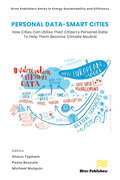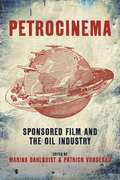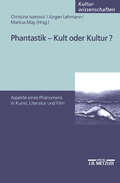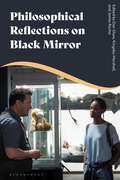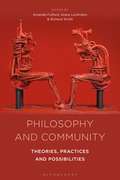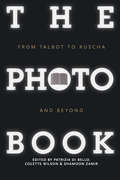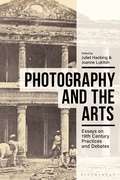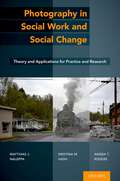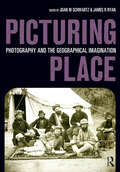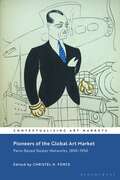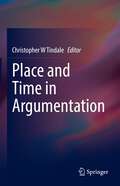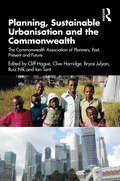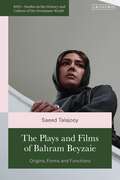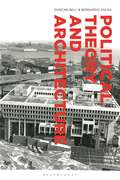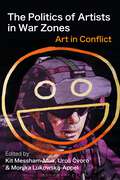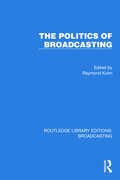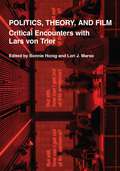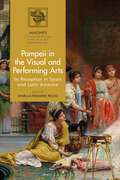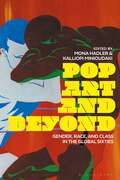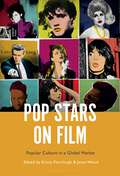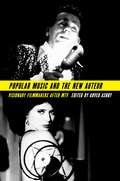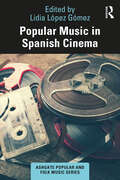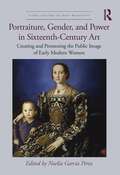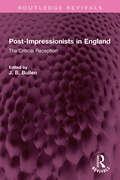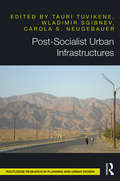- Table View
- List View
Personal Data-Smart Cities: How cities can Utilise their Citizen’s Personal Data to Help them Become Climate Neutral
This book sets out to address some of the issues that a smart city needs to overcome to make use of both the data currently available to them and how this can be enhanced by using emerging technology enabling a citizen to share their personal data, adding value. It provides answers for those within a smart city, advising their mayors or leaders on introducing new technology. We will cover the topic so as to enable many different public officials to be able to understand the situation from their own perspective, be they lawyers, financial people, service providers, those looking at governance structures, policy makers, etc. We are contributing to the new model for the European Data Economy. Case studies of existing best practice in the use of data are augmented with examples of embracing a citizen’s personal data in the mix, to enable better services to develop and potential new revenue streams to occur. This will enable new business models and investment opportunities to emerge. We will address the topic of how to put a value on data and will conclude by looking at what new technologies will be emerging in the coming years, to help cities with carbon-neutral targets to have more chance of succeeding.
Petrocinema: Sponsored Film and the Oil Industry
Petrocinema presents a collection of essays concerning the close relationship between the oil industry and modern media-especially film. Since the early 1920s, oil extracting companies such as Standard Oil, Royal Dutch/Shell, ConocoPhillips, or Statoil have been producing and circulating moving images for various purposes including research and training, safety, process observation, or promotion. Such industrial and sponsored films include documentaries, educationals, and commercials that formed part of a larger cultural project to transform the image of oil exploitation, creating media interfaces that would allow corporations to coordinate their goals with broader cultural and societal concerns. Falling outside of the domain of conventional cinema, such films firmly belong to an emerging canon of sponsored and educational film and media that has developed over the past decade. Contributing to this burgeoning field of sponsored and educational film scholarship, chapters in this book bear on the intersecting cultural histories of oil extraction and media history by looking closely at moving image imaginaries of the oil industry, from the earliest origins or “spills” in the 20th century to today's post industrial “petromelancholia.”
Phantastik - Kult oder Kultur?: Aspekte eines Phänomens in Kunst, Literatur und Film
Als ein Indikator sich anbahnender epochaler Wandlungen dominiert Phantastik viele Bereiche der Kultur, insbesondere der Alltagskultur. Wird in der Phantastik das Inventar der abendländischen Kultur zugleich bewahrt wie in Frage gestellt, so ist es Aufgabe einer gegenwartsbezogenen Phantastikforschung, dies aufzuzeigen und dabei zugleich die spezifischen Transformationsverfahren der Phantastik herauszuarbeiten. Der Band ist hervorgegangen aus einem anlässlich der Ausstellung »Phantastik am Ende der Zeit« (2000) durchgeführten Kongress in Erlangen. Er versammelt die Beiträge von Vertretern mehrerer kulturwissenschaftlicher Disziplinen, die sich unterschiedlichen Aspekten der Phantastik in der bildenden Kunst, im Film und in der Literatur widmen.
Philosophical Reflections on Black Mirror
Black Mirror is a cultural phenomenon. It is a creative and sometimes shocking examination of modern society and the improbable consequences of technological progress. The episodes - typically set in an alternative present, or the near future - usually have a dark and satirical twist that provokes intense question both of the self and society at large. These kind of philosophical provocations are at the very heart of the show. Philosophical reflections on Black Mirror draws upon thinkers such as Friedrich Nietzsche, Pierre Hadot and Michel Foucault to uncover how Black Mirror acts as 'philosophical television' questioning human morality and humanity's vulnerability when faced with the inexorable advance of technology.
Philosophy and Community: Theories, Practices and Possibilities
'Why should we care about philosophy?'Public philosophy, or 'doing philosophy' in the community, is an important and growing trend – revealed not only by the phenomenon of the Parisian philosophy café, but also the contemporary rise of multiple grassroots projects, for example the Philosophy in Pubs movement. This book is the first to offer academic examination of the theoretical contributions and practical applications of community philosophy.Bringing together voices from diverse contexts and subject areas, from activism and political action to religious environments, arts organisations and museums to maximum security prisons, this collection asks key questions about the point of making philosophy available for everyone: 'How do you “do philosophy” with the public?'; 'Is philosophy in the community the same as academic philosophy?'; 'Why is community philosophy important?'Including contributions from practitioners and researchers from professional philosophy, education, healthcare, and community philosophy, this collection offers perspectives on a growing area of study. It offers a timely and critical introduction to, and analysis of, what philosophy can be when grounded in socially-engaged activities.
The Photobook: From Talbot to Ruscha and Beyond
The photograph found a home in the book before it won for itself a place on the gallery wall. Only a few years after the birth of photography, the publication of Henry Fox Talbot's "The Pencil of Nature" heralded a new genre in the history of the book, one in which the photograph was the primary vehicle of expression and communication, or stood in equal if sometimes conflicted partnership with the written word. In this book, practicing photographers and writers across several fields of scholarship share a range of fresh approaches to reading the photobook, developing new ways of understanding how meaning is shaped by an image's interaction with its text and context and engaging with the visual, tactile and interactive experience of the photobook in all its dimensions. Through close studies of individual works, the photobook from fetishised objet d'art to cheaply-printed booklet is explored and its unique creative and cultural contributions celebrated.
Photography and the Arts: Essays on 19th Century Practices and Debates
Photography, both in the form of contemporary practice and that of historical material, now occupies a significant place in the citadels of Western art culture. It has an institutional network of its own, embedded within the broader art world, with its own specialists including academics, critics, curators, collectors, dealers and conservators. All of this cultural activity consolidates an artistic practice and critical discourse of photography that distinguishes what is increasingly termed 'art photography' from its commercial, scientific and amateur guises. But this long-awaited recognition of photography as high art brings new challenges. How will photography's newly privileged place in the art world affect how the history of creative photography is written?Modernist claims for the medium as having an aesthetic often turned on precedents from painting. Postmodernism challenged a cultural hierarchy organized around painting. 19th century photographs move between the symbolic spaces of the gallery wall and the archive: de-contextualised for art and re-contextualised for history. But what of the contemporary writings, images, and practices that negotiated an aesthetic status for 'the photographic'? Photography and the Arts revisits practices both celebrated and elided by the modernist and postmodernist grand narratives of art and photographic history in order to open up new critical spaces. Written by leading scholars in the fields of photography, art and literature, the essays examine the metaphorical as well as the material exchanges between photography and the fine, graphic, reproductive and sculptural arts.
Photography in Social Work and Social Change: Theory and Applications for Practice and Research
Photography is taking on an ever-stronger role and prominence in social work practice and research. An increasing number of projects and articles utilize or describe photography as a method for practice, or present research on applied photographic methods. Photography in Social Work and Social Change provides a comprehensive overview of photography in these areas. It features original applied content, state-of-the-art case examples, and user-friendly guides to introduce readers to the theory, methods, ethics, technical aspects, and cultural considerations of this practice. It bridges theory and knowledge with applications that can be replicated by students, practitioners, and researchers. With step-by-step guidelines, this book will be the go-to resource for anyone interested in photography in social work.
Picturing Place: Photography and the Geographical Imagination
The advent of photography opened up new worlds to 19th century viewers, who were able to visualize themselves and the world beyond in unprecedented detail. But the emphasis on the photography's objectivity masked the subjectivity inherent in deciding what to record, from what angle and when. This text examines this inherent subjectivity. Drawing on photographs that come from personal albums, corporate archives, commercial photographers, government reports and which were produced as art, as record, as data, the work shows how the photography shaped and was shaped by geographical concerns.
Pioneers of the Global Art Market: Paris-Based Dealer Networks, 1850-1950 (Contextualizing Art Markets)
By the turn of the twentieth century, Paris was the capital of the art world. While this is usually understood to mean that Paris was the center of art production and trading, this book examines a phenomenon that has received little attention thus far: Paris-based dealers relied on an ever-expanding international network of peers. Many of the city's galleries capitalized on foreign collectors' interest by expanding globally and proactively cultivating transnational alliances. If the French capital drew artists from around the world-from Cassatt to Picasso-the contemporary-art market was international in scope. Art dealers deliberately tapped into a growing pool of discerning collectors in northern and eastern Europe, the UK, and the USA. International trade was rendered not just desirable but necessary by the devastating effects of wars, revolutions, currency devaluation and market crashes which stalled collecting in Europe.Pioneers of the Global Art Market assembles original scholarship based on a close inspection of and fresh perspective on extant dealer records. It caters to an amplified curiosity concerning the emergence and workings of our unprecedented contemporary-centric and global art market. This anthology fills a significant gap in the expanding field of art market studies by addressing how, initially, contemporary art, which is now known as historical modernism, made its way into collections: who validated what by promoting and selling it, where, and how. It includes unpublished material, concrete examples, bibliographical and archival references, and should appeal to academics, curators, educators, dealers, collectors, artists and art lovers alike. It celebrates the modern art dealer as transnational impresario, the global reach of the modern-art market, and the impact of traders on the history of collecting, and ultimately on the history of art.
Place and Time in Argumentation
This book introduces the principles of place and time by discussing the main roles they play in argumentation, unpacking the multifarious meanings of spatiality and temporality. Definitions of kairos are explored to yield suggestions as to how this concept, and that of ‘place’, can operate in argumentation. The chapters explore various related concepts such as the role of different arguments in different places, and how some places are not intended for argument; argumentation, time and temporality; visual argumentation; the effect of the passage of time on argument evaluation; and the image as a site of discursive production. This collection is of interest to students and researchers in argumentation studies, rhetoric, reasoning, and philosophy.Previously published in Argumentation Volume 34, issue 1, March 2020
Planning, Sustainable Urbanisation and the Commonwealth: The Commonwealth Association of Planners, Past, Present and Future
By 2050, an additional 2.5 billion people will be living in the world’s towns and cities, almost 50% of them in the 56 Commonwealth countries. To a significant extent, the future of the planet hangs on how cities and human settlements are managed. It is in our cities that the emissions creating climate catastrophe are stoked and where change can – and must – make a difference at scale. Food security, water, basic services, migration, shelter, jobs, environment: sustainable urbanisation is about changing direction to strive for a fairer and less environmentally damaging future. This well-illustrated book by authors from around the Commonwealth tells how the Commonwealth Association of Planners across five decades has campaigned to make a difference. It also looks ahead, scoping the urgent, practical action that is now required.
The Plays and Films of Bahram Beyzaie: Origins, Forms and Functions (British Institute of Persian Studies)
Bahram Beyzaie is one of Iran's leading playwrights and auteur filmmakers. This book examines several of Beyzaie's films and plays and their preoccupation with the modalities and transformations of Iranian contemporary, historical and mythical identity from different perspectives. The chapters analyse Beyzaie's influential plays such as Arash and So Dies Pahlevan Akbar and his filmic magnum opuses such as The Crow, Bashu, the Little Stranger and Killing Mad Dogs from a range of critical perspectives including ecofeminist, sociopolitical, new-historicist, archetypal and psychoanalytical readings. They also explore Beyzaie's dialogue with filmic genres such as noir, different Iranian languages such as Gilaki, Iranian epics and ritual practices such as ta'ziyeh plays and javanmardi chivalry cults. Together, the chapters show how Beyzaie's works negotiate narratives of belonging and undermine the dominant exclusionist discourses in Iran, and how they use the resources of Iranian folk and performance traditions to comment on the position of women, children, intellectuals, and minorities in society.
Political Theory and Architecture
What can political theory teach us about architecture, and what can it learn from paying closer attention to architecture? The essays assembled in this volume begin from a common postulate: that architecture is not merely a backdrop to political life but a political force in its own right. Each in their own way, they aim to give countenance to that claim, and to show how our thinking about politics can be enriched by reflecting on the built environment.The collection advances four lines of inquiry, probing the connection between architecture and political regimes; examining how architecture can be constitutive of the ethical and political realm; uncovering how architecture is enmeshed in logics of governmentality and in the political economy of the city; and asking to what extent we can think of architecture-tributary as it is to the flows of capital-as a partially autonomous social force.Taken together, the essays demonstrate the salience of a range of political theoretical approaches for the analysis of architecture, and show that architecture deserves a place as an object of study in political theory, alongside institutions, laws, norms, practices, imaginaries, and discourses.
The Politics of Artists in War Zones: Art in Conflict
What exactly is contemporary war art in the West today? This book considers the place of contemporary war art in the 2020s, a whole generation after 9/11 and long past the 'War on Terror'.Exploring the role contemporary art plays within conversations around war and imperialism, the book brings together chapters from international contemporary artists, theorists and curators, alongside the voices of contemporary war artists through original edited interviews.It addresses newly emerged contexts in which war is found: not only sites of contemporary conflicts such as Ukraine, Yemen and Syria, but everywhere in western culture, from social media to 'culture' wars. With interviews from official war artists working in the UK, the US, and Australia, such as eX de Medici (Australia) and David Cotterrell (UK), as well as those working in post-colonial contexts, such as Baptist Coelho (India), the editors reflect on contemporary processes of memorialisation and the impact of British colonisation in Australia, India and its relation to historical conflicts. It focuses on three overlapping themes: firstly, the role of memory and amnesia in colonial contexts; secondly, the complex role of 'official' war art; and thirdly, questions of testimony and knowing in relation to alleged war crimes, torture and genocide.Richly illustrated, and featuring three substantial interview chapters, The Politics of Artists in War Zones is a hands-on exploration of the complexities and challenges faced by war artists that contextualises the tensions between the contemporary art world and the portrayal of war. It is essential reading for researchers of fine art, curatorial studies, museum studies, conflict studies and photojournalism.
The Politics of Broadcasting (Routledge Library Editions: Broadcasting #28)
The Politics of Broadcasting (1985) examines the state of broadcasting in a variety of Western democracies from a political viewpoint, written at a time when new telecommunications and information technology revolutionised television and radio. The book describes and analyses the problems faced by politicians and broadcasters in responding to these changing technological and political environments.
Politics, Theory, and Film: Critical Encounters with Lars von Trier
Lars von Trier's intense, disturbing, and sometimes funny films have led many to condemn him as misogynist or misanthropic. The same films inspire this collection's reflections on how our fears and desires regarding gender, power, race, finitude, family, and fate often thwart -- and sometimes feed -- our best democratic aspirations. The essays in this volume attend to von Trier's role as provocateur, as well as to his films' techniques, topics, and storytelling. Where others accuse von Trier of being clichéd, the editors argue that he intensifies the "clichés of our times" in ways that direct our political energies towards apprehending and repairing a shattered world. The book is certainly for von Trier lovers and haters but, at the same time, political, critical, and feminist theorists entirely unfamiliar with von Trier's films will find this volume's essays of interest. Most of the contributors tarry with von Trier to develop new readings of major thinkers and writers, including Agamben, Bataille, Beauvoir, Benjamin, Deleuze, Euripides, Freud, Kierkegaard, Ranciére, Nietzsche, Winnicott, and many more. Von Trier is both central and irrelevant to much of this work. Writing from the fields of classics, literature, gender studies, philosophy, film and political theory, the authors stage an interdisciplinary intervention in film studies.
Pompeii in the Visual and Performing Arts: Its Reception in Spain and Latin America (IMAGINES – Classical Receptions in the Visual and Performing Arts)
This volume examines the influence that Pompeii and, to a lesser extent, Herculaneum had on the visual and performing arts in Spain and countries across South America. Covering topics from architecture, painting and decorative arts to theatre, dance and photography, the reader will gain insight into the reception of classical antiquity through the analysis of the close cultural ties between both sides of the Atlantic, in the past and the present. Each contribution has been written by a specialist researcher participating in the project, 'The Reception and Influence of Pompeii and Herculaneum in Spain and Ibero-America', funded by the Spanish Ministry of Science and Innovation (PGC2018-093509-B-I00 Ministry of Science and Innovation/AEI/ERDF/EU).Pompeii in the Visual and Performing Arts begins by examining the influence of Pompeiian architecture in Spain in paintings that depict scenes inspired by Roman scenes and also buildings modelled on those of Pompeii. Next, the influence of Pompeii crosses the Atlantic to Mexico with a study of the archaeological site's influence on the visual and performing arts. An exploration of the elitist use of the ancient past in architecture is seen in Chilean architecture, which leads onto an investigation of the new art styles that emerged in the 19th century. Later chapters look into the influence of the ancient frescoes and the use of modern plaster casts of statues. The final chapters are devoted to comics and photography, which also make a study of the places in Latin America nicknamed 'Pompeii' in the 20th and 21st centuries.
Pop Art and Beyond: Gender, Race, and Class in the Global Sixties
A decade of revisionism has challenged the entrenched view of Pop Art as a largely Anglo-American movement and exposed its international reach. Pop Art and Beyond is the first scholarly exploration of the role of gender, race and class, and their intersection in the production, reception and politics of global manifestations of pop during the Long Sixties.Edited by post-war art scholars Mona Hadler and Kalliopi Minioudaki, the book features an array of rigorous chapters written by acclaimed international experts and emerging scholars who explore the work of over twenty artists. These include practitioners of different cultural, racial and social origins and sexual orientation, including numerous female artists from around the world. By transgressing the borders of individual and national contexts and forsaking Cold War dichotomies and the dominant definition of pop art, Hadler and Minioudaki create a space in which pop can be opened up and a new appreciation of its heterogeneity and politics achieved.
Pop Stars on Film: Popular Culture in a Global Market
Pop stars have provided audiences with performative moments that have become ingrained in popular consciousness. They are a lens through which deeper understandings about race, gender, politics, history and the artistic process can be understood. When combined with the most affective of mediums – cinema, the combination can be both thrilling and alarming.From the relatively early days of cinema, figures from the world of popular music have made forays into acting and contributed cameo appearances. From Little Richard and Kylie Minogue to Nick Cave and Tom Waits, Pop Stars On Film: Popular Culture in a Global Market offers a collection of essays on some of the most influential international performances from a diverse range of cultural icons. The book considers industry shifts, access and diversity, but also the notion of cultural appropriation, audience appeal, marketing and demographics. Perhaps most importantly, the publication will look at what happens when cultures collide and coalesce.
Popular Music and the New Auteur: Visionary Filmmakers after MTV
MTV utterly changed the movies. Since music television arrived some 30 years ago, music videos have introduced filmmakers to a new creative vocabulary: speeds of events changed, and performance and mood came to dominate over traditional narrative storytelling. Popular Music and the New Auteur charts the impact of music videos on seven visionary directors: Martin Scorsese, Sofia Coppola, David Lynch, Wong Kar-Wai, the Coen brothers, Quentin Tarantino, and Wes Anderson. These filmmakers demonstrate a fresh kind of cinematic musicality by writing against pop songs rather than against script, and allowing popular music a determining role in narrative, imagery, and style. Featuring important new theoretical work by some of the most provocative writers in the area today, Popular Music and the New Auteur will be required reading for all who study film music and sound. It will be particularly relevant for readers in popular music studies, and its intervention in the ongoing debate on auteurism will make it necessary reading in film studies.
Popular Music in Spanish Cinema (Ashgate Popular and Folk Music Series)
Popular Music in Spanish Cinema analyses the aesthetics and stylistic development of soundtracks from national productions, considering how political instability and cultural diversity in Spain determined the ways of making art and managing culture. As a pioneering study in this field, the chronologically structured approach of this book provides readers with a complete overview of Spanish music and connects it to the complex historical events that conditioned Spanish culture throughout the 20th century to the present day, from the Second Republic, the Spanish Civil war, and the dictatorship through to democracy. The book enables an understanding of the relationships between the recording and film production industries, the construction of collective imagination, the formulation of new stereotypes, semiotic meanings within film music and the musical exchanges between national and international cinema. This volume is an essential read for students and academics in the field of musicology, ethnomusicology and history as well as those interested in the study of diverse musical styles such as copla, zarzuela, flamenco, jazz, foxtrot, pop and rock and how they have been used in Spanish films throughout history.
Portraiture, Gender, and Power in Sixteenth-Century Art: Creating and Promoting the Public Image of Early Modern Women (ISSN)
This exciting and wide-ranging volume examines the construction and dissemination of the image of female power during the Renaissance.Chapters examine the creation, promotion, and display of the image of women in power, and how the artistic and cultural patronage they developed helped them craft a self-image that greatly contributed to strengthening their power, consolidating their political legitimacy, and promoting their authority. Contributors cover diverse models of sixteenth-century female power: from ruling queens, regents, and governors, to consorts of sovereigns and noblewomen outside the court. The women selected were key political figures and patrons of art in England, France, Castile, the Low Countries, the Holy Roman Empire, and Italian city states. The volume engages with crucial and controversial debates regarding the nature and use of portraiture as well as the changing patterns of how portraits were displayed, building a picture of the principal iconographic solutions and representational strategies that artists used.The book will be of interest to scholars working in art history, gender studies, women’s studies, and Renaissance studies.
Post-Impressionists in England: The Critical Reception (Routledge Revivals)
First Published in 1988, Post-impressionists in England documents the response of English taste to modern French art from the first Post-Impressionist Exhibition in 1910 to the outbreak of the First World War. The notion of ‘Post-Impressionism’, unlike its earlier counterpart, Impressionism, was an exclusively English contribution to art history. Originally used to denote the work of Cezanne, Van Gogh, Gauguin, Matisse and the Fauve painters, it rapidly assimilated Futurism, Cubism and recent English work like Vorticism. By focusing on one aspect of an important and complex period in British cultural history, J.B. Bullen illuminates not only aesthetic questions but also the way in which those aesthetic issues were determined and conditioned by social and political concerns.Changes in English attitudes to art in this period were so rapid and were modified with such speed that the author has taken a strictly chronological approach to the subject. He sets out clearly the month-by-month developments in English attitudes and traces in detail the debates about modernism in England. To make matters clearer the book is divided into three major parts, each complementary to the others. The introduction surveys the period as a whole and places attitudes to art in the general context of the culture of the time. In the second part the extracts provide selected, concrete and particular examples of the huge range of material upon which the findings of the introduction are based; the writers represented include Roger Fry, Bernard Berenson, Desmond McCarthy, John singer Sargent, Walter Sickert, Clive Bell, Virginia Woolf and Wyndham Lewis. In the third part a chronology sets out in tabular form month-by-month events- exhibitions and major publications- as they occurred in Britain and in France. This is a must read for scholars and researchers of British cultural history and art history.
Post-Socialist Urban Infrastructures (OPEN ACCESS)
Post-Socialist Urban Infrastructures critically elaborates on often forgotten, but some of the most essential, aspects of contemporary urban life, namely infrastructures, and links them to a discussion of post-socialist transformation. As the skeletons of cities, infrastructures capture the ways in which urban environments are assembled and urban lives unfold. Focusing on post-socialist cities, marked by neoliberalisation, polarisation and hybridity, this book offers new and enriching perspectives on urban infrastructures by centering on the often marginalised aspects of urban research—transport, green spaces, and water and heating provision. Featuring cases from West and East alike, the book covers examples from Azerbaijan, Bulgaria, Serbia, Croatia, Germany, Russia, Georgia, Lithuania, Poland, the Czech Republic, Tajikistan, and India. It provides original insights into the infrastructural back end of post-socialist cities for scholars, planners and activists interested in urban geography, cultural and social anthropology, and urban studies.
